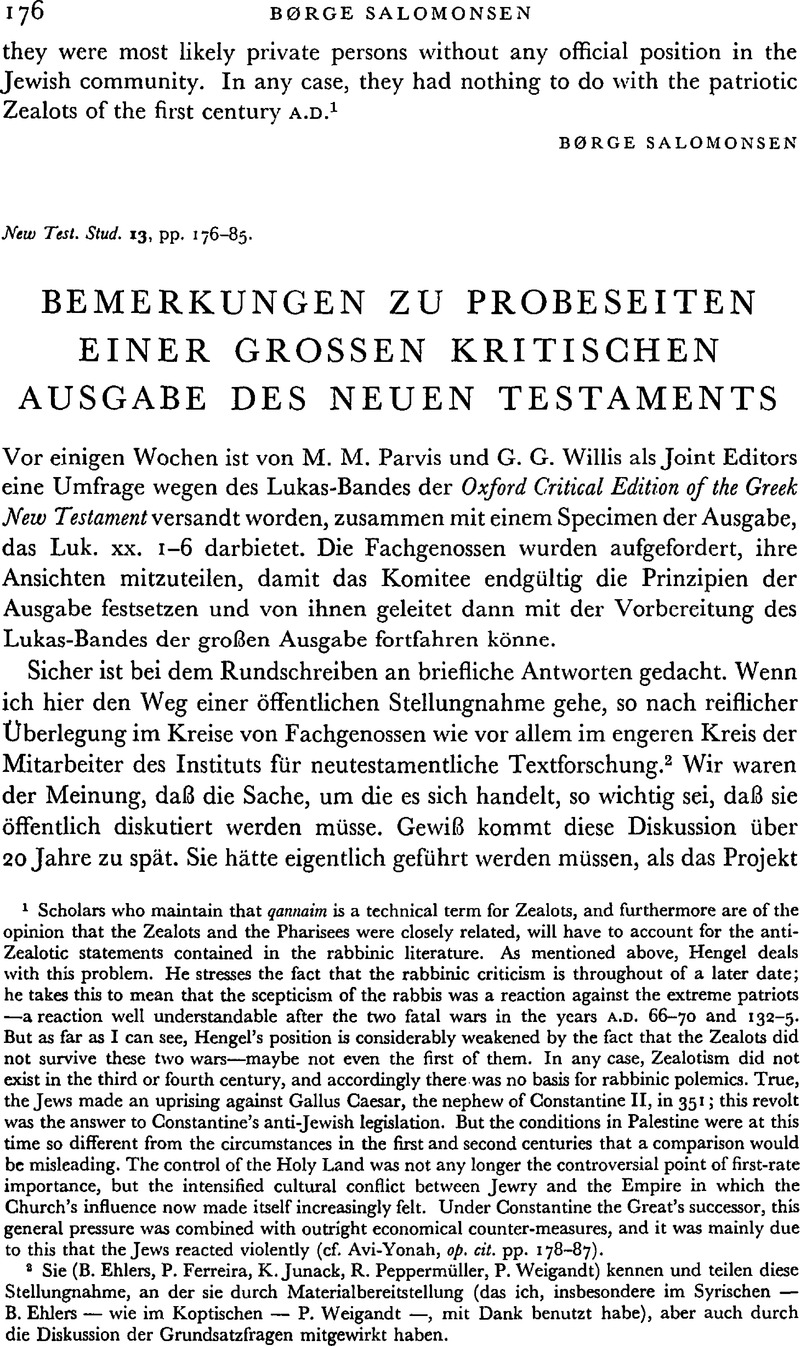No CrossRef data available.
Article contents
Bemerkungen zu Probeseiten einer grossen kritischen Ausgabe des Neuen Testaments
Published online by Cambridge University Press: 05 February 2009
Abstract

- Type
- Short Studies
- Information
- Copyright
- Copyright © Cambridge University Press 1966
References
page 176 note 1 Scholars who maintain that qannaim is a technical term for Zealots, and furthermore are of the opinion that the Zealots and the Pharisees were closely related, will have to account for the anti-Zealotic statements contained in the rabbinic literature. As mentioned above, Hengel deals with this problem. He stresses the fact that the rabbinic criticism is throughout of a later date; he takes this to mean that the scepticism of the rabbis was a reaction against the extreme patriots—a reaction well understandable after the two fatal wars in the years A.D. 66–70 and 132–5. But as far as I can see, Hengel's position is considerably weakened by the fact that the Zealots did not survive these two wars-maybe not even the first of them. In any case, Zealotism did not exist in the third or fourth century, and accordingly there was no basis for rabbinic polemics. True, the Jews made an uprising against Gallus Caesar, the nephew of Constantine II, in 351; this revolt was the answer to Constantine's anti-Jewish legislation. But the conditions in Palestine were at this time so different from the circumstances in the first and second centuries that a comparison would be misleading. The control of the Holy Land was not any longer the controversial point of first-rate importance, but the intensified cultural conflict between Jewry and the Empire in which the Church's influence now made itself increasingly felt. Under Constantine the Great's successor, this general pressure was combined with outright economical counter-measures, and it was mainly due to this that the Jews reacted violently (cf. Avi-Yonah, , op. cit. pp. 178–87).Google Scholar
page 176 note 2 Sie (B. Ehlers, P. Ferreira, K. Junack, R. Peppermüller, P. Weigandt) kennen und teilen diese Stellungnahme, an der sie durch Materialbereitstellung (das ich, insbesondere im Syrischen — B. Ehlers — wie im Koptischen — P. Weigandt —, mit Dank benutzt habe), aber auch durch die Diskussion der Grundsatzfragen mitgewirkt haben.
page 177 note 1 Ich würde, nebenbei bemerkt, einen anderen Weg für zweckmäßiger halten: am oberen Rand der Seite sollten — wie z. B. bei der Itala-Ausgabe Jülicher/Matzkows — die positiven Zeugen angegeben werden (das ist bei 64 Majuskeln und 7 Papyri nicht schwierig). In der ‘List of Deficiencies’ sollten dann nur die Ausfälle der Minuskeln verzeichnet werden.




